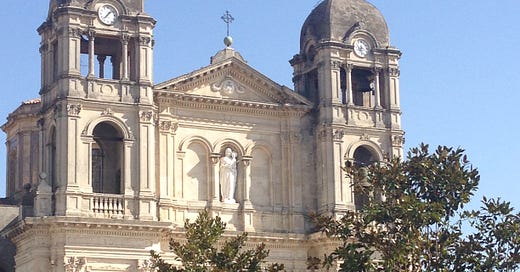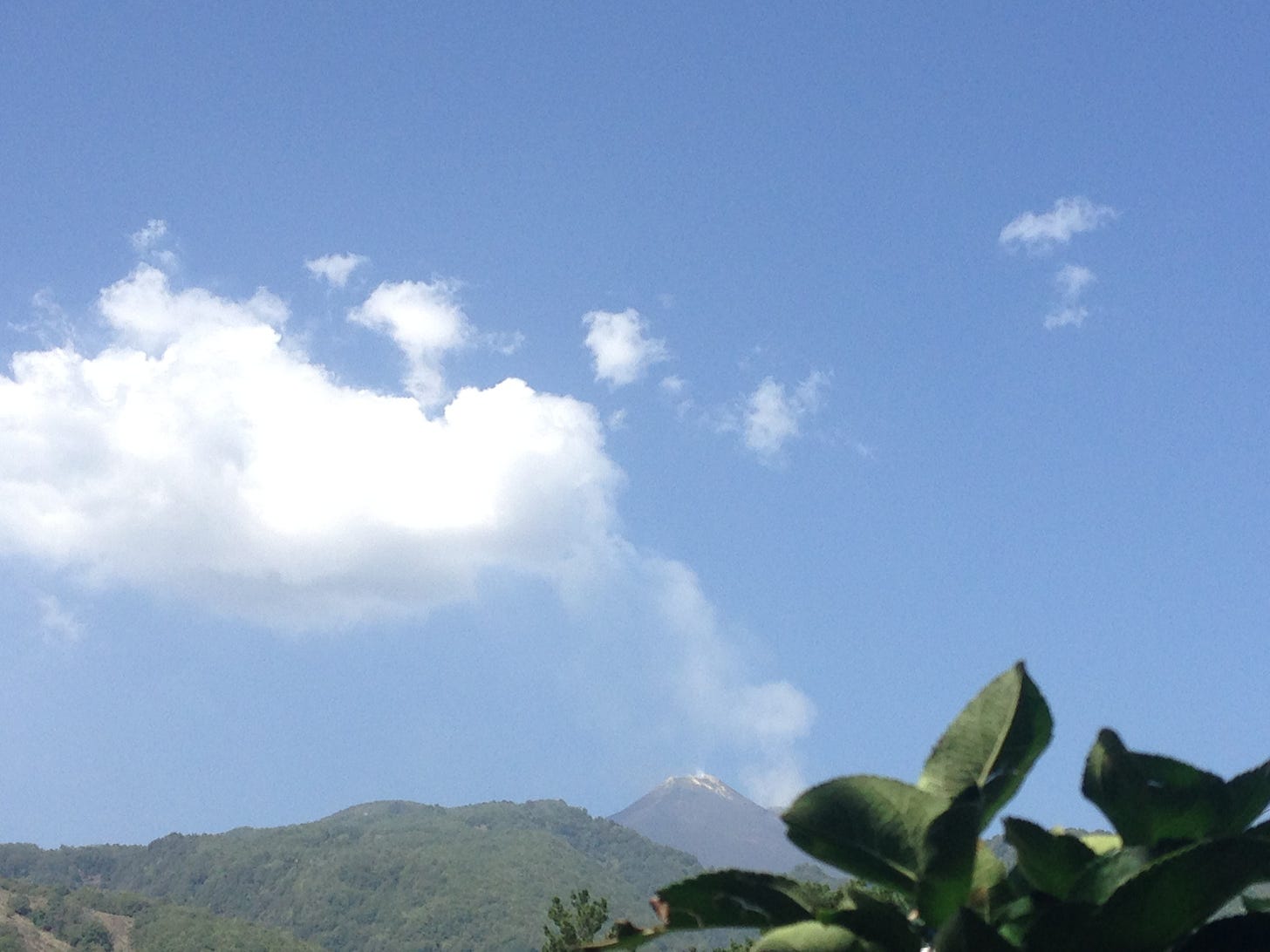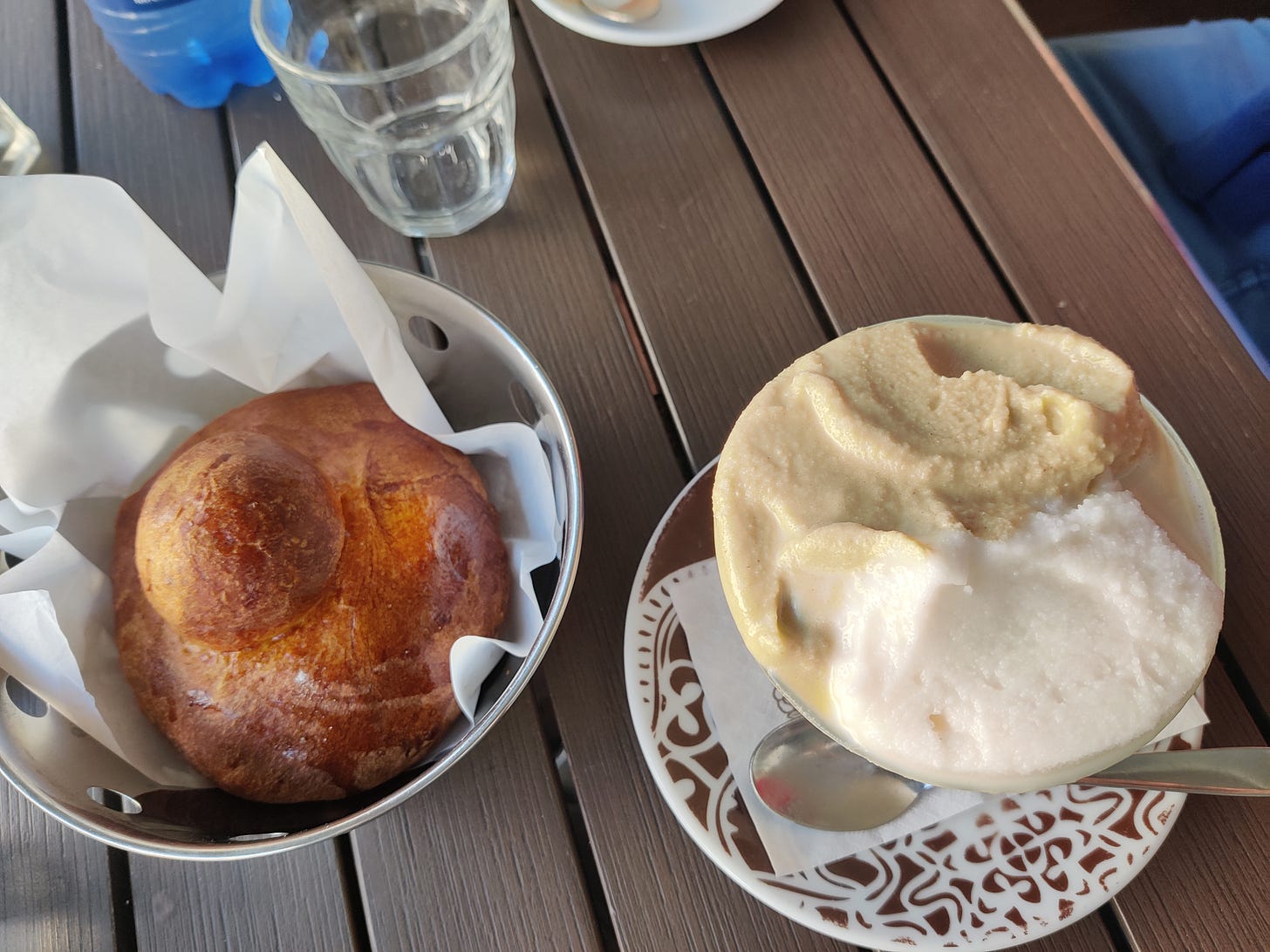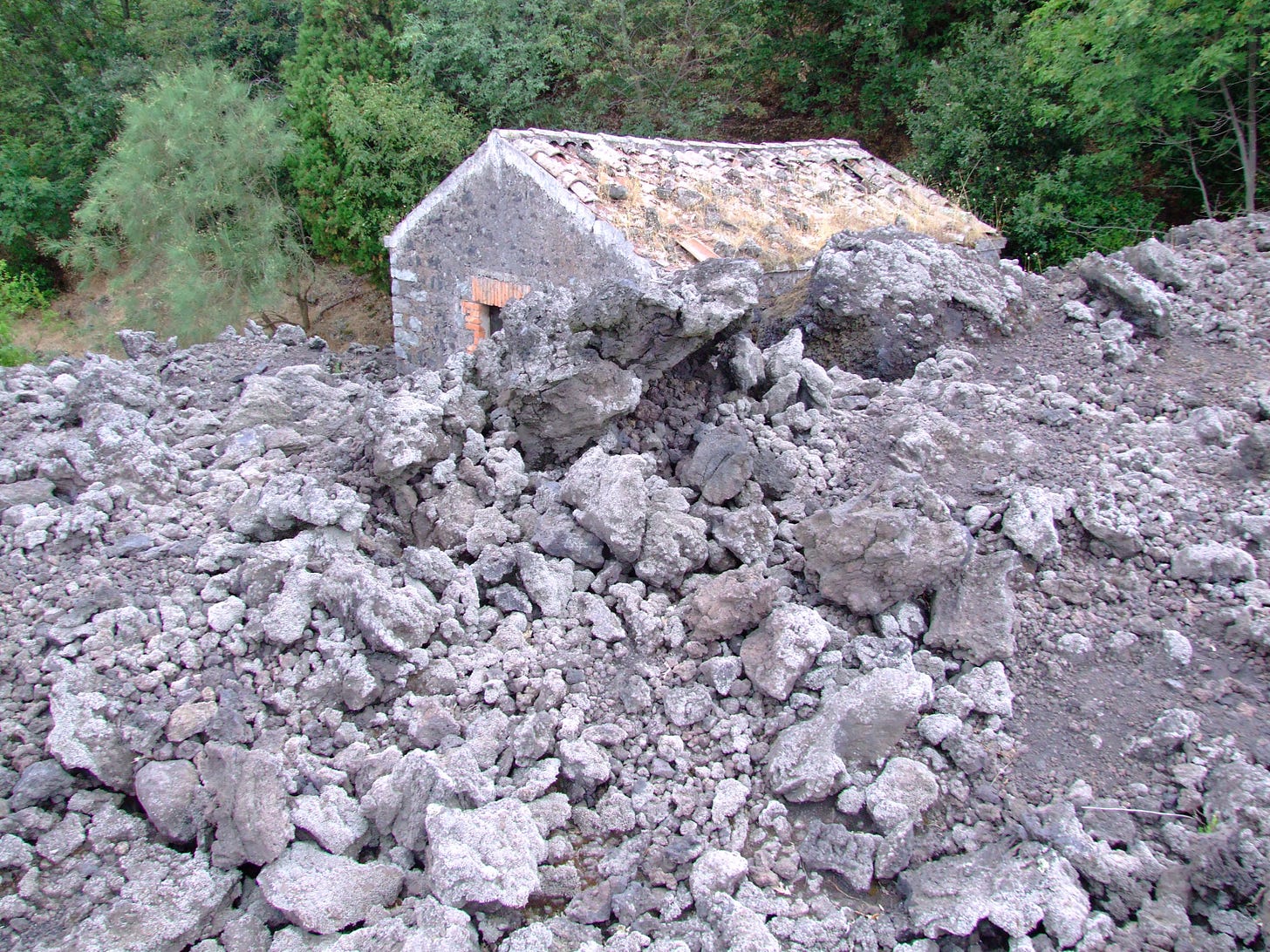Zafferana Etnea
The place where the volcano meets the sea and Sicily reveals its most authentic soul
Today I want to tell you about one of the places I hold dearest — a corner of the world tied to my childhood, and still today my go-to whenever I need to recharge. It’s a little town on the slopes of Mount Etna, not too high up, and easy to reach from all the main spots in eastern Sicily. It has a unique charm — nestled between a view of the volcano and a stunning terrace overlooking the sea.
The Pearl of Etna
That’s what they call it — for its mix of beauty, food, scenery, and more.
Zafferana Etnea lies on the southeastern side of Mount Etna. The name “Zafferana” is said to come from the Arabic “za’faran,” meaning saffron, maybe because of the golden tones of the flowering vegetation (like broom plants). The nature here is just incredible — and that's thanks to the volcanic ash that often falls from above and enriches the soil with minerals. My grandma used to say this all the time — and it’s actually true! Even though Sicily is generally hot and dry, this part is humid and super green.
Last time I visited, I scooped up a bit of that ash, packed it in a little bag, and took it back to my balcony in Milan. I spread it into my plant pots, and I swear — everything is greener and blooming this year! Probably a coincidence, but I like to believe it worked — it makes me feel closer to that part of Italy that I often miss.
It’s a very green area, full of biodiversity: forests, vineyards, chestnut groves, broom fields. Even just driving through the countryside is beautiful — I often stop by the roadside to pick blackberries.
The Town
Zafferana is a small town. You won’t find massive attractions like in a city, but the center is home to a stunning Sicilian Baroque church. It sits on a square that opens up into a natural terrace with sea views — on clear days you can even see Calabria across the water. Behind the church rises Mount Etna. The streets that run above and below it are lined with low traditional Sicilian houses and old-style shops.
What I love most is that it’s all still so authentic — just like when I was little. The local shops are still there, no fast food chains or big retail stores. Everything moves slower, more genuinely. Want some meat? You go to the butcher, not a giant supermarket. In the afternoon, the elderly sit around the square chatting while kids play nearby. It’s all stayed the same. You breathe in the real Sicily here.
There’s also a small but well-kept park with an open-air amphitheater where, every summer, both Italian and international artists perform — even big names like Patti Smith in the past. A little gem, tucked into this small town.
Despite its simplicity, it draws a lot of local visitors and people looking to unwind for a few days.
Local Food
Zafferana is famous for its honey — considered among the best in Italy — as well as for wines, hazelnuts, and traditional sweets. Every Sunday in October, the town hosts the Ottobrata, a food festival that takes over the whole center. You can taste honey, wine, sweets, and lots more — with events for the whole family.
A must-try while you're here is the Sicilian pizza, which is not your typical pizza. It’s actually a deep-fried, stuffed dough pocket, closed like a calzone and filled with cheese, anchovies, or other local ingredients. Crispy on the outside and melty on the inside — pure street food heaven. The most iconic version is served at Bar Donna Peppina, a local institution.
And let me say this clearly: I had the best granita of my life here. Creamy, icy, and full of flavor — especially the almond and mulberry ones. It’s nothing like a regular slush; this is Sicilian heritage in a cup.
Of course, this area is also known for its amazing Etna wines. The Etna Rosso DOC is a bold red, earthy and mineral-rich, while the Etna Bianco DOC is fresh and citrusy — both made from grapes grown in volcanic soil.
The Volcano and Past Eruptions
Back in the ‘90s, there was a major eruption of Mount Etna that headed straight toward the town. I was a kid, and I vaguely remember the tension on the news. Etna is considered a “gentle” volcano because its lava flows slowly — so there’s time to evacuate. I remember watching this stream of lava inch toward the houses. They tried everything to stop it — nothing worked.
Then suddenly, it stopped. Just like that. It cooled off just a couple of meters away from the first house on the edge of town. That house — and the whole town — was saved. You can still visit that exact spot. It’s amazing to see this black lava path cutting through the green landscape, ending just before the house. You can even walk along it back up the mountain — and you might spot a few little buildings the lava caught along the way. If you go, wear tough shoes — cold lava can be rough on soles!
Nearby Places Worth Seeing
Zafferana is in a super convenient location — just 30 minutes from Catania and about 30–40 minutes from Rifugio Sapienza, where most Etna crater excursions start. It’s also less than an hour from Taormina, Syracuse, and Ortigia (I’ve written about that here too, if you're curious!). So, a perfect base to explore.
Here are a few nearby gems:
Milo – A charming wine town, famous for Etna Bianco DOC and the ViniMilo festival. Great for strolls and tastings.
Santa Venerina – Known for artisan distilleries and traditional sweets (try the lemon and herbal liqueurs!).
Castagno dei Cento Cavalli (Sant’Alfio) – A legendary tree, one of the oldest and largest in Europe.
Monte Zoccolaro – Offers breathtaking views of Etna and the Valle del Bove. A short but scenic hike.
Final Thoughts
I don’t know if I’ve managed to really express the authenticity of this place, but if you’re ever in this part of Italy — plan a little detour. My grandma always said this land was special, that Etna gives off a magical, passionate energy to everything and everyone around it. I don’t know if it’s true... but I like to think it is.
See you soon!













Thank you for sharing! It sounds lovely. Is it possible to reach Zafferana Etnea without a car?